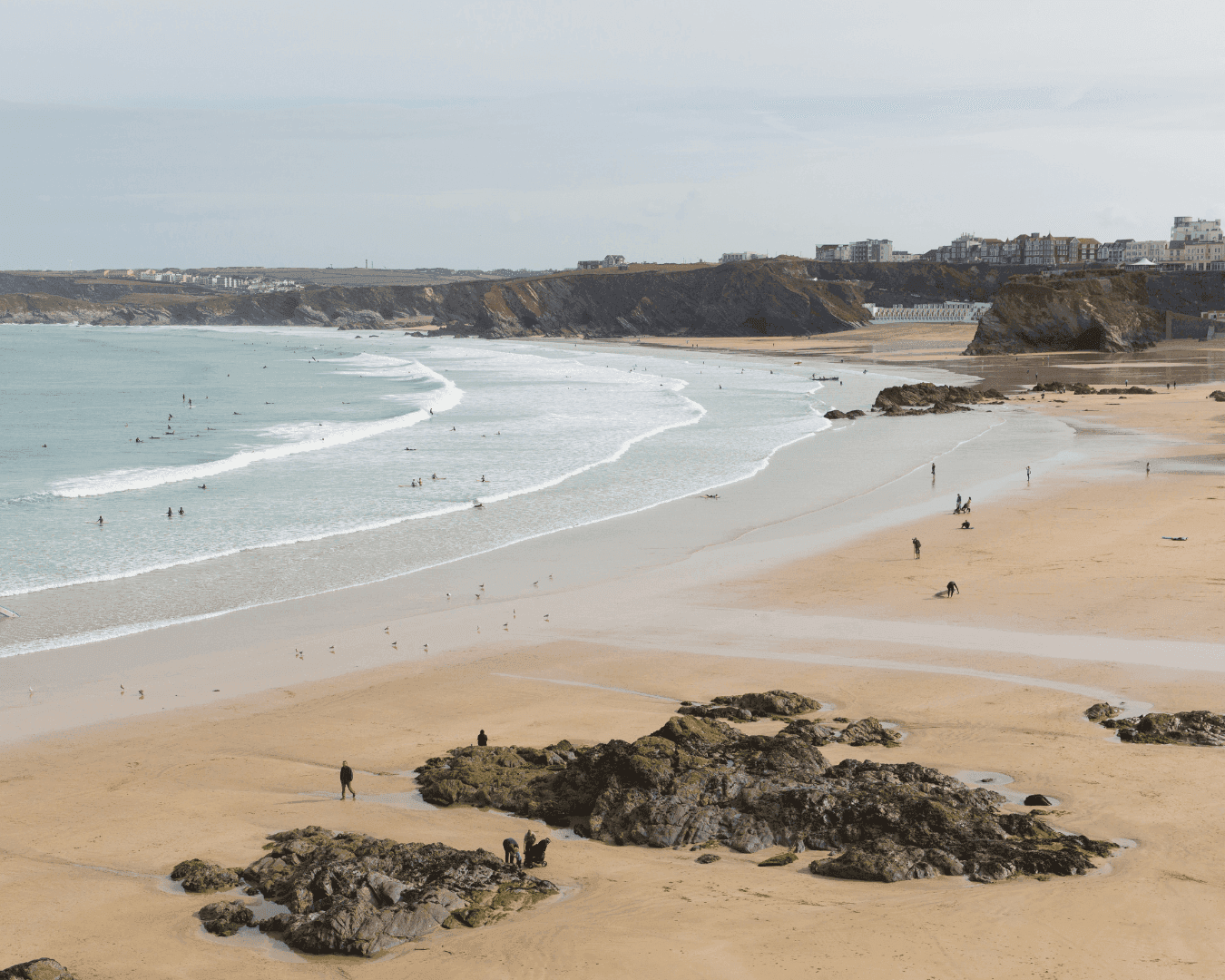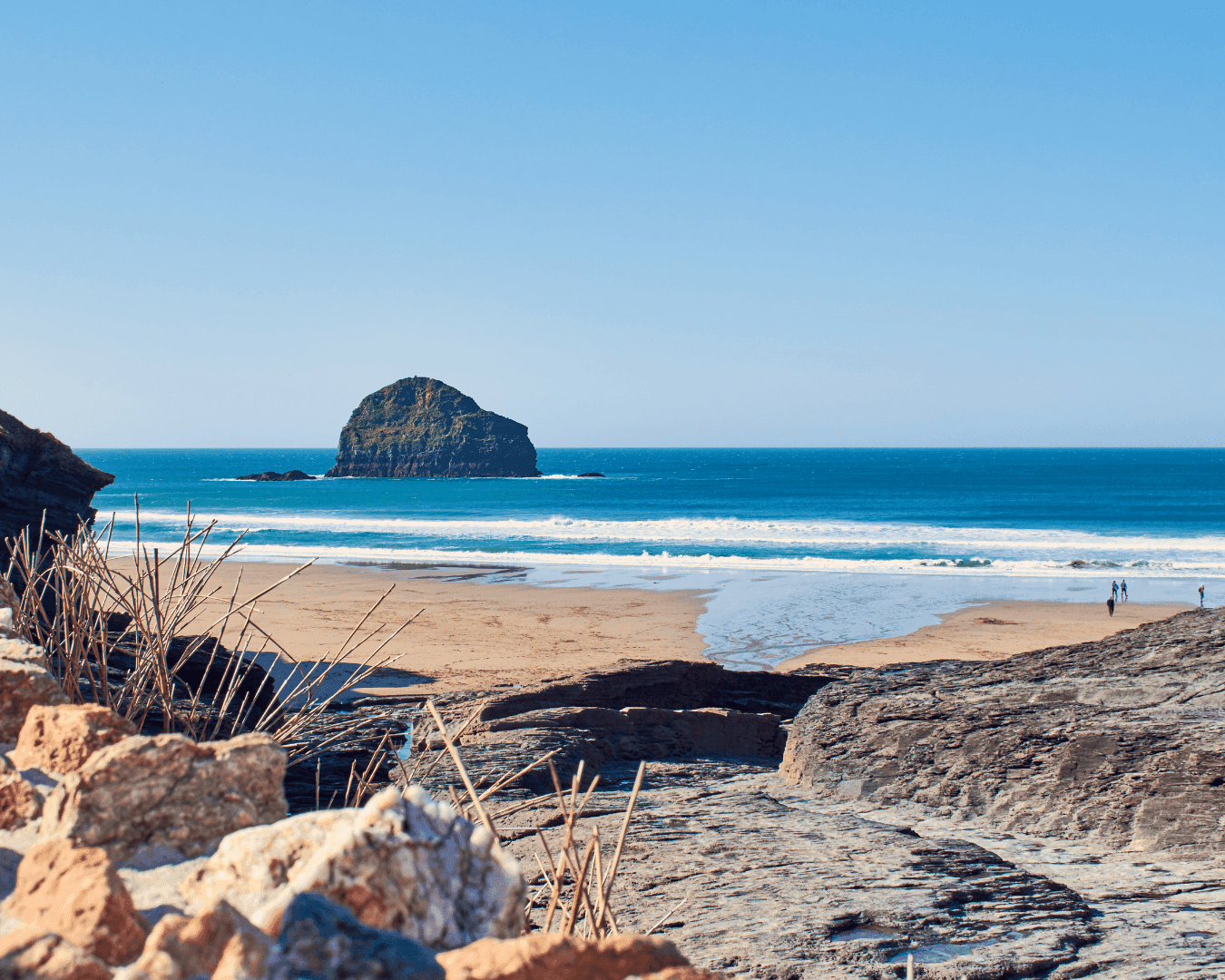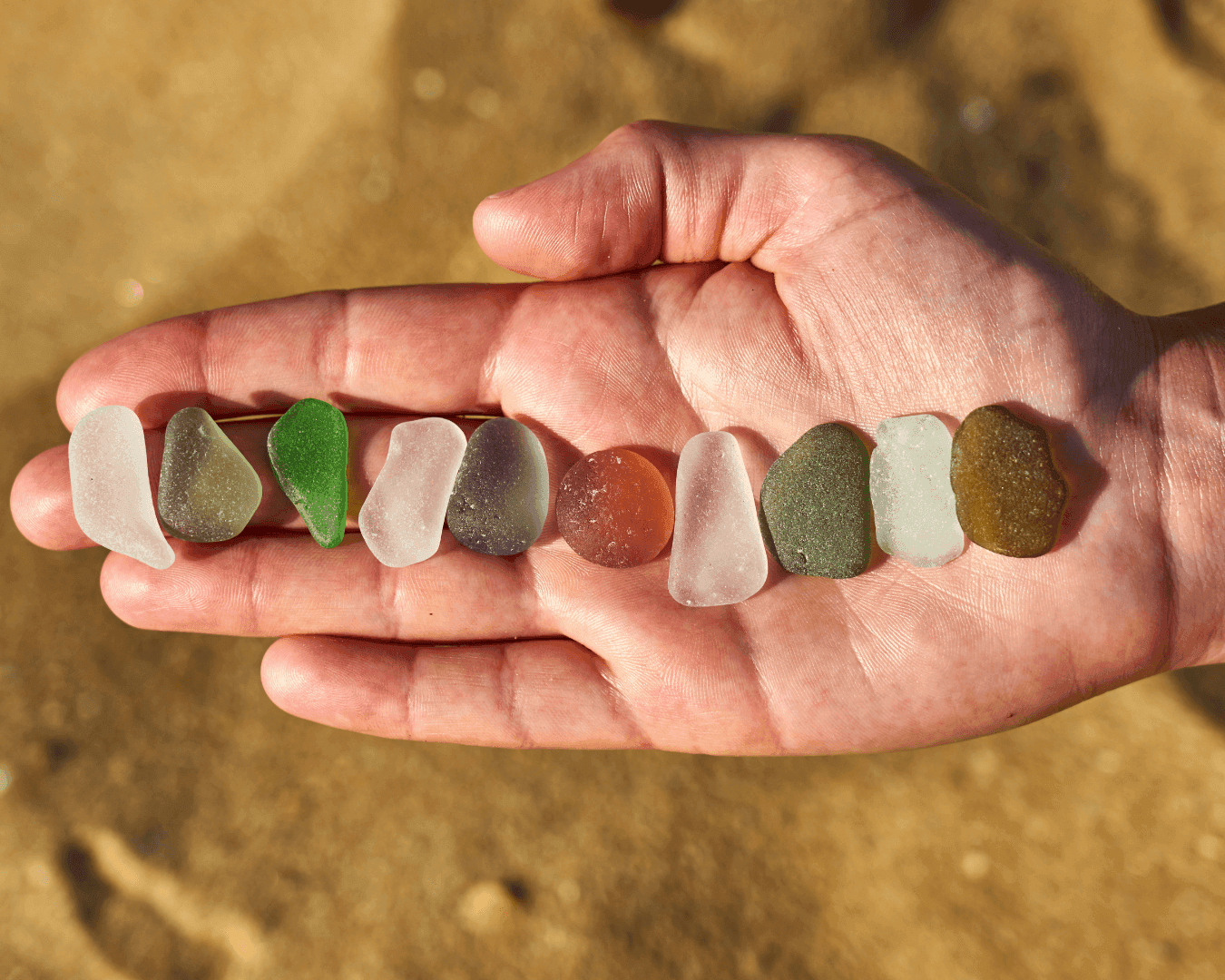Cornwall's best beaches for sea glass treasures
Winter in Cornwall is full of unexpected wonders; the coastline comes alive with surprises – from playful dolphin visits to the thrilling drama of storm watching, there’s plenty to see, do and explore this season. One activity best enjoyed during the winter months is beach combing for sea glass. Amidst the wild waves of winter and as we experience more storms than any other time of year, it’s the perfect time to spot these natural gems. Just one month into 2024 and we have already been paid visits by Storm Henk, Storm Isha and Storm Jocelyn. These powerful storms have undoubtedly laboured to generate storm surges and dramatic waves, unearthing long buried glass treasure waiting to be discovered.
Centuries ago, sea glass was referred to as 'mermaid tears'. The legend goes that every time a sailor drowned at sea, mermaids would cry, and sea glass was formed from their tears, washing up on the shore. As beautiful as this tale is, the reality of sea glass' origins diverges significantly, but it is nevertheless intriguing. Sea glass originates from discarded or broken glass, such as bottles or tableware, which then finds its way into the sea. The combination of the ocean’s movement and the abrasive effect of sand and rocks wears down the sharp edges of the glass and creates the smooth, frosted sea glass we know and love. While sea glass has existed as long as glassmaking, dating back around 4000 years, stumbling upon pieces that are centuries old is rare. But you may find pieces that are up to 200 years old with a potentially rich history.
You can often tell how old sea glass is and where it comes from by the colour. White, aqua, green and brown sea glass usually originates from milk, beer, wine, and soda bottles. While deep cobalt blues are likely to have come from glass jars used for ink wells and medicine jars used by doctors of the 1890s. Pink, lavender, purple, and lime green shades are likely to have originated from perfume bottles and art glass. While the rarest colour you can find, orange, is usually from red warning lights used on ships as well as decorative vases and tableware.
Collecting sea glass is the perfect excuse to get out of the house this winter. The combination of a seaside walk, fresh air and concentrating on spotting elusive sea glass fragments is the perfect grounding activity when you want to clear your mind. For the best chance of finding sea glass, go beach combing around 2 hours after high tide. By then the sea would have churned up plenty of long buried treasure for the taking. Go on a bright day, as bright as you can get in winter, because sea glass is easier to spot amongst sand and stone when it is sunny as the light will reflect off pieces. It’s always good to aim for beaches near ports and harbours or industrial coastlines, but to make it easier for you we have rounded up some of our favourite locations to find sea glass.
Pentewan Beach
Spanning over half a mile, Pentewan Beach boasts shingly sands with abrasive and smoothing properties which increases the likelihood of finding perfectly polished sea glass. Set just back from the sea, the village of Pentewan was once a bustling port, exporting tin and china clay, leaving remnants of this maritime past scattered along the sand in the form of sea glass.
Holywell Bay Beach
Holywell Bay, situated on Cornwall’s north coast, is another large beach with an expansive shoreline, offering plenty of opportunities for uncovering sea glass treasures. The sand dunes along with the rock pools are known to be a particular haven for sea glass. Holywell Bay was recently used as a filming destination for House of the Dragon, as you discover sea glass, imagine it originate from the ships of Westeros.
St Ives Harbour Beach
Nestled in one of Cornwall’s most picturesque towns, St Ives Harbour Beach is renowned for its scenic beauty, serving as a muse for both local and visiting artists over the years. But it’s beneath the waves that this coastal gem reveals its real treasures. Here you will discover plenty of sea glass but also pieces of patterned ceramic pottery to add to your collection – especially around Smeaton’s Pier.
Marazion Beach
With breathtaking views of St Michael’s Mount, Marazion Beach is a vast sandy beach offering a wonderful day out as well as a haven for sea glass. You’re likely to find a wide variety of sea glass here, including rare colours such as purple and sometimes you may even stumble across an orange piece. One of the best spots to look for sea glass on Marazion is to the left of the beach by the rock pools.
Portreath Beach
Portreath Beach is renowned as a haven for surfers, luring them in with its big waves creating impressive surf. These same waves carry the most gorgeous sea glass to the shore. You’ll find sea glass amidst the shingle near the shoreline but be careful of the rough waves, it’s easy to forget how close the sea can reach when you’re so focused on the ground.
Towan Beach
Washed onto the shore of Towan Beach, you’re likely to find large pieces of sea glass alongside rare sea glass pebbles, especially around the rockpools and surrounding the Island House. During low tide, Towan Beach connects to Great Western Beach. If you time your visit just right you can walk towards Great Western from Towan and explore freshly-churned ocean treasures along the usually submerged shoreline.
Watergate Bay Beach
Just a short 10-minute drive from Towan Beach, Watergate Bay is the perfect destination to include in your day of beach combing if you’re already in the Newquay area. The sea-beaten cliffs stand as a testament of the powerful forces of the big Atlantic swells. These very waters, in their rough state, deliver the finest, perfectly rounded sea glass to the shores. Dogs are allowed all year round at Watergate Bay, so why not bring your furry friend to help you look as well?
Trebarwith Strand Beach
Trebarwith Strand is a wild and untamed stretch of coastline. When you’re on the hunt for sea glass, embracing the wild and untamed is certainly the way to go. Trebarwith Strand experiences strong tidal shifts, consistently exposing new areas of sand and rocks to explore, providing plenty of opportunity for new sea glass locations to reveal themselves. As tempting as a cold swim may be during your beach excursion, please note that Trebarwith Strand contains dangerous currents and swimming is only recommended when there are lifeguards on duty.
Wherever you decide to set off on your sea glass hunt, it’s important to prioritise your comfort and safety. Sifting through cold and damp stones can be a strain on our hands, particularly in winter. It’s handy to equip yourself with the right tools for the job – a rake or scoop can be invaluable for sifting through sand and pebbles efficiently, especially when the cold winter weather sets in. Ensure you wear appropriate shoes to navigate the shoreline comfortably especially if you plan to clamber around rock pools or over rocks. It’s also essential to keep a keen eye on the tide to avoid getting trapped while engrossed in your sea glass pursuit. If you’re feeling especially humanitarian, we recommend bringing an extra bag for litter. This small effort contributes to the well-being of our Cornish beaches and will make a positive impact on the environment while you search for treasures.
Stay connected
Find us on socials and stay connected with the Cornwall you love.
We use cookies to personalise content and ads and to analyse our traffic. You consent to our cookies if you continue to use our website. (Privacy Policy)







